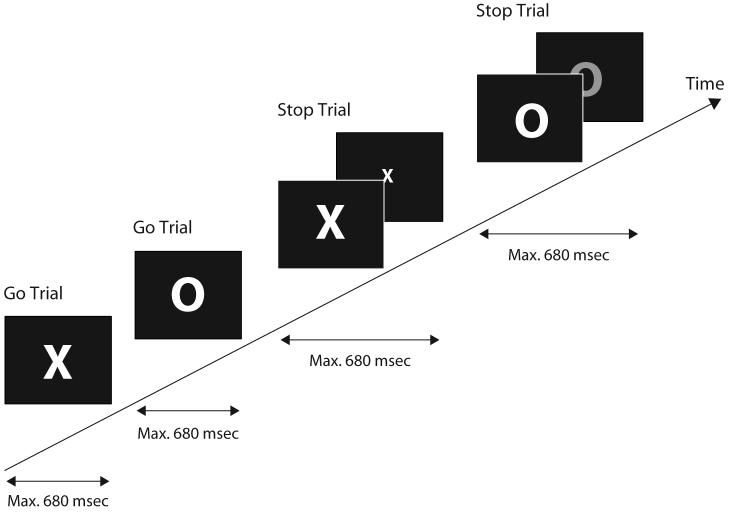Figure 1.
Experimental procedure. Shown is an example sequence of four trials: go–go–stop–stop. The stimuli X and O were alternating. The stop signal (indicated by the X's becoming smaller or the O's changing color) occurred in a random 50% of the trials, equally often for X and O. The stop signal delays were adjusted adaptively on a trial-by-trial basis. The mean interval between one stimulus and the next was 3,600 msec, varying randomly between 3,400 and 3,600 msec (not shown in the figure).

